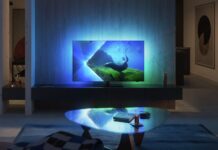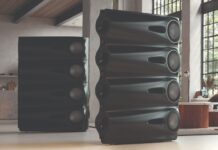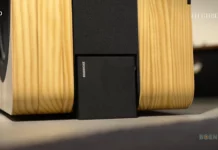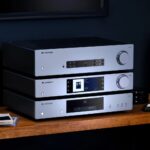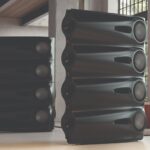Dynaudio was started up in 1977 in Denmark by a group of engineers and developers who had a love for music and speaker design. They claimed even expensive speakers sounded coloured and that there were timing differences. This was not only audible but also measurable.
At first they made cabinets using drivers of other manufacturers. Dynaudio found they did not achieve the desire result because the drivers were not performing enough. In terms of dynamics (compression), precision, homogeneity and linearity. Because of this they started developing own drivers, which became so famous that a large number of cabinet producers used them for their renowned quality. The first driver developed by Dynaudio was the famous 28mm soft down with acoustic chamber that efficiently dampens the backwards energy produced. To cool the voice coil Dynaudio invented ferro fluid 30 years ago.
In later years the Esotar T330D became world famous and it is currently still being used in high end designs by other speaker manufacturers, such as Eggelston Works.
Dynaudio is currently being distributed in more than 60 countries and is used in the most advanced studio’s of the world, eg ‘BBC Radio and Music’. The car industry also used Dynaudio, Volvo, Volkswagen and Bugatti for example.
Dynaudio DM 2/6
This review tests the entry level range of Dynaudio, the DM-range, of which the smallest of 4 siblings is tested: the DM26. The range also houses the DM2/7, a floorstanding speaker, the DM 3/7 and a matching center speaker. The small Dynaudios are very well finished and are equally beautiful, or maybe even more, without their fronts. It’s a classic two way system with bass port at the back. With a 29cm height and 17cm width they can be considered as small speakers. Whether they sound big, we’ll know soon. The technical specs state the Dynaudio’s can handle up to 150 Watts (IEC), which is very high for such a small cabinet. Even with higher volumes they remain firm. The cabinet houses a 14cm low/midrange driver and a 28mm soft dome tweeter, a real two-way.
Quite unique is that the cone and dust cover of the midrange are made as one part, using MSP or Magnesium Silicat Polymer. The magnet housing is opened at the back to achieve perfect ventilation at backwards movements of the cone. This technology is normally only used in more expensive, professional driver. The reflex ports at the back warn you not to position the speakers too close to the wall. However it is good to know that even when discarding this warning, the bass line remained as clear. Perfectionist can find plugs to close the ports when wanted. Very handy when using them as a bookshelf for example. The speakers are available in rosewood or black. The fronts are very reliable, and so are the speaker terminals. I wouldn’t have expected otherwise with Dynaudio.






